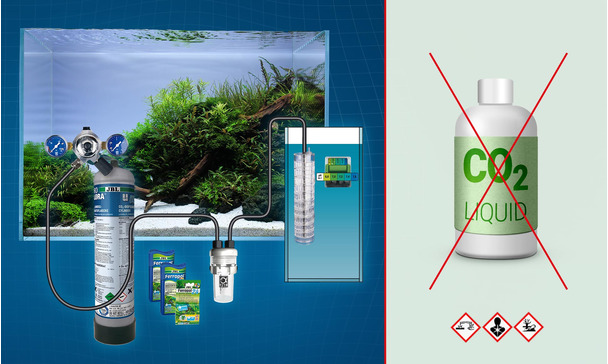john6
Member
Just been looking at liquid carbon but does it do as it says and is worth using or is it just not worth it? So many claims but that is probably marketing so need telling from real users or non users
I am just looking at improving my Discus tank as It is too big for me to use gas, I shall be using gas on my other tank when I get it started, but just reading all the manufacturers blurb just gives you a headache. I use diy ferts for the tank but just thinking if the LC would benefit my tank as the blurb says or just a waste of money.It depends what you're after using it for. If you're using it as a carbon source, then yeah, it can be useful to plants, but it won't ever beat injection of CO2, it doesn't come close. It's pretty much a "better than nothing" option. CO2 can be somewhat expensive to initially set up, but the cost of the actual gas is generally quite low, so IMO if you're looking to provide carbon then you're best off just getting gaseous CO2.
To play devils advocate, CO2 can sometimes be difficult to dial in correctly and have it be stable throughout the photoperiod, liquid CO2 won't have this problem. Liquid CO2 has the added benefit of generally being used as an algecide, but really, it's a sterilising agent, so if anything, it's more of a 'biocide', it just happens that algae crumbles first. Based on this, I personally am not really comfortable of the idea of using it in a tank with fish, I've seen fish react first-hand as soon as it goes in the water, but there are also many people who use it in tanks with large amounts of fish and have no issues.
What size is your tank? If you have easier plants in the tank then you could potentially convert it to a low-tech tank with reduced lighting, although if you have beautiful coloured discus fish I'm assuming you probably won't want reduced lighting, I wouldn't anywayI am just looking at improving my Discus tank as It is too big for me to use gas
It would be great if the manufacturers stated on the bottle that glutaraldehyde is a very poor source of carbon but as an algaecide it's rather effective.but just reading all the manufacturers blurb just gives you a headache.
Do you have low pH and low TDS for the Licorice Gouramis?I use liquid carbon daily and my Crinum calimistratum is perfectly fine with it, so are all my other plants which mostly include more difficult species, my licorice gouramis are fine with it as well.
It would be great if the manufacturers stated on the bottle that glutaraldehyde is a very poor source of carbon but as an algaecide it's rather effective.
Liquid CO2 will generally help plants grow...
Rainwater ph 7.5, gh5 kh2Do you have low pH and low TDS for the Licorice Gouramis?
I wonder if that affects how the Crinum tolerate the Glut. Or it could be something else of course.
Hi @tigertimRainwater ph 7.5, gh5 kh2
The only other changes were increase of ferts,...
I wondered myself if it was coincide.

The ferts were changed about 4 weeks after starting to see the growth spurt, as a result in the increase demand.That's the issue when observing just one tank that is set up as a normal tank. In reality there are lots of changing parameters even if we are not actively adjusting them (waste/nutrient accumulation, bacteria development, plants getting established etc ), hard to separate that from the one change we want . It's been around for some time so there are some tests with 'liquid carbon' done with controls and documented out there. Some better some worse but they all point to low/no plant improvement. On the other hand, I can't but ask myself, after all this time where are the documented tests and data from the sellers of these 'liquid carbon' solutions (biased as they may be )??? I imagine if the plants grow the tank out overnight they will be the first to post the videos 😉
Maybe this article published by an aquarium company ( be aware of marketing!ie not selling that stuff but marketing other stuff) provides john6 some more information

The story of liquid CO2 fertilisation – The Reliability
In the fourth part of the series “The story of liquid CO2 fertilisation” we examine what we consider to be the most important aspect. The health of your animals but also of you, the aquarium owners is our number one priority.www.jbl.de
Exactly. Your tank will have far more CO2 in it naturally. What it adds is roughly the same as adding nothing.I dont have the calculations at hand, but If i recall correctly at the dose seachem recommends you get about ~1.5ppm co2 (assuming 100% efficiency in degradation) this is with a half life of 12 hours (again, If i remember correctly).
Yes down the gutters into the large water buttHi @tigertim
May I ask - are the figures above measured on rainwater straight out of the sky? Or are they after flowing over a roof and gutters, for example? I suspect the latter.
Just interested.
JPC
